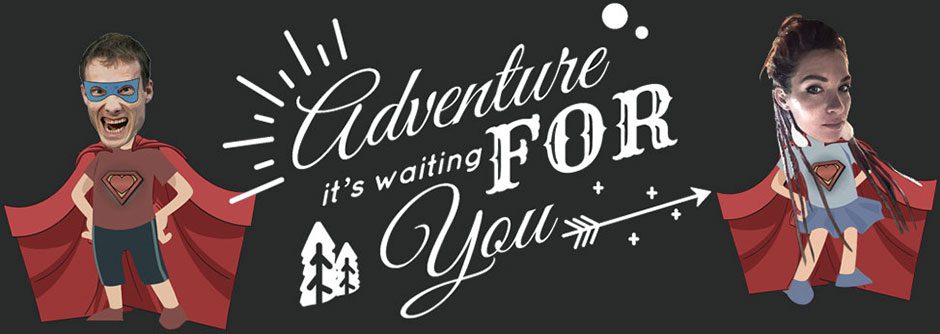Ergon

Ergon
Ergon stands for pure ergonomics for cyclists, which has been perfectly thought through. The secret behind it is that Ergon works hand in hand with the most extreme professional cyclists and that the team itself consists of many enthusiastic cyclists. The Ergon team is a group of lateral thinkers and problem solvers. They are innovative, enthusiastic about technology and permanently curious. In short, it is a team that is itself part of the cycling community and can therefore develop from within exactly what every cyclist loves. Ergon takes care of all interfaces where a bike comes into contact with the cyclist. From the saddle to the handlebar grips and backpacks.
Rider and bike as a unit
Everything is created ergonomically and adapted to the human being. Why? Because the focus is on people and the aim is to provide an optimal cycling experience. Cycling is one of the few forms of locomotion in which different parts of the body permanently interact with the means of locomotion, the bicycle, as a system. Every change of a single influencing variable has an effect on the body and thus on the efficiency of locomotion. Therefore the bicycle as a whole should be adapted to the human being.
Ergonomics is everything!
In order to ensure that Ergon's colour bike parts offer the optimum user comfort that they should, the company follows strict guidelines in their manufacture. The design of the product takes up the body shape and leads to a better distribution of the occurring forces. Unpleasant pressure peaks and the resulting discomfort are avoided.
The physiological adaptation of ergonomic products to the body makes them particularly user-friendly and comfortable. The joint position, movement control and the entire posture are optimised. In this way, malpositions and resulting complaints can be corrected or avoided in advance.
Different materials with specific properties at the various interfaces optimise the contact points from the cyclist to the wheel, thus enabling better control. When cycling, the majority of the body weight rests on the relatively small saddle surface. This is often a problem because the seat area is one of the most sensitive regions of the body. After a long bike ride, our buttocks often hurt as if we had been crossed. This is because the extremely pressure-sensitive perineum and genital area is located on the buttocks. If the weight is not transferred evenly to the insensitive areas of the buttocks, load peaks occur, which can lead to increased sitting discomfort depending on the sitting position and duration. Nerves compressed between the pelvic bones and saddle lead to numbness and paresthesia, especially the pubic nerve with its many branches plays a major role here.
The physiological adaptation of ergonomic products to the body makes them particularly user-friendly and comfortable. The joint position, movement control and the entire posture are optimised. In this way, malpositions and resulting complaints can be corrected or avoided in advance.
Different materials with specific properties at the various interfaces optimise the contact points from the cyclist to the wheel, thus enabling better control. When cycling, the majority of the body weight rests on the relatively small saddle surface. This is often a problem because the seat area is one of the most sensitive regions of the body. After a long bike ride, our buttocks often hurt as if we had been crossed. This is because the extremely pressure-sensitive perineum and genital area is located on the buttocks. If the weight is not transferred evenly to the insensitive areas of the buttocks, load peaks occur, which can lead to increased sitting discomfort depending on the sitting position and duration. Nerves compressed between the pelvic bones and saddle lead to numbness and paresthesia, especially the pubic nerve with its many branches plays a major role here.
What can you do for seat pain?
For a healthy pressure distribution of the body weight on the saddle, the interaction of seat bone distance and upper body inclination should harmonize. The correct saddle width is just as important. This must provide sufficient contact surface for distribution, but must not prevent the thighs from rotating freely. There should be no high pressure in the perineal and genital area so that nerves and blood vessels are not pinched off. A relief channel provides a remedy here and distributes the pressure to the insensitive areas.
The handles
Many recreational cyclists and professionals know the problem of their hands falling asleep or starting to tingle. The hand is a very complex and sensitive body part. A lot of nerves run through the wrist, which is a constriction and therefore a problem zone. Due to the low fat and muscle content, the hand is little protected and therefore sensitive to pressure loads.
Why do I get pain in my hand?
The hands support a large part of the upper body weight on the handlebars. Thus there is a constant and high pressure on a small area. This can irritate nerve tracts. The situation is made more difficult by the fact that many cyclists bend their wrists too much. This makes the narrowing of the wrist even tighter and irritates the nerves. This usually manifests itself in sensory disturbances, tingling, numbness or sensations in the little finger and ring finger. In extreme cases, even the gripping function of all fingers can be limited.
What can you do about it?
The pressure must be distributed more evenly. A larger contact surface of the handle distributes the forces better and the nerves are not irritated. Whoever has these problems should choose an ergonomic wing handle. The screw clamping of Ergon grips allows an individual angle of the wing to be fixed to the handlebars. Thus, the Ergon bicycle grips actively prevent the wrist from bending down.
And this is where we come in! We don't need saddles as hikers, but the right grip on the hand grips of our tow-bars is also crucial for us. With the Ergon bicycle grips this is no longer a problem.
www.ergon-bike.com
And this is where we come in! We don't need saddles as hikers, but the right grip on the hand grips of our tow-bars is also crucial for us. With the Ergon bicycle grips this is no longer a problem.
www.ergon-bike.com




